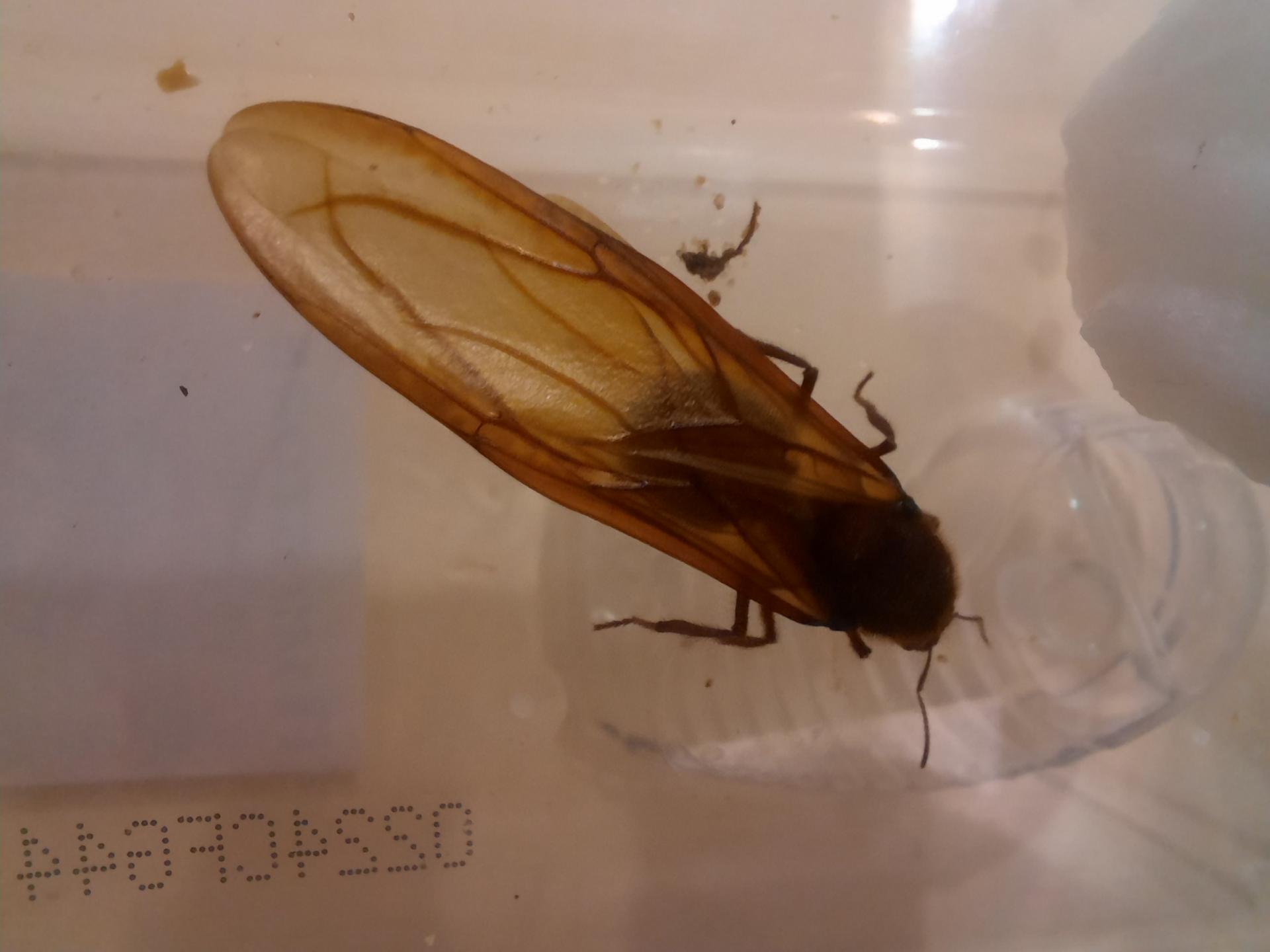I’m no leafcutter antkeeper but I know a couple things about these guys that prove useful. (I would recommend to thoroughly read through).
1. The black thing inside the setup maybe a fungus pellet. This is carried by all leafcutter ants (those in the genus of Atta and Acromyrmex. Your queen is most likely Atta) and the pellet is harvested from fungus garden of the queens mother nest. This is what queens use to start their fungus garden so yes this is the fungus.
2. Since Atta are a fully claustral species, she does not need to be fed anything in the founding stage. Feeding her honey to calm her down after the tiring flight would work but after this, do not feed her anything as she will use her wing muscle storage to feed her brood.
3. When alates remove their wings and become de-alates, this indicates that they might be fertile and lay eggs. Now just because of this doesn’t mean they will all be fertile and sometimes fertile queens will keep their wings on through their entire life which could be your queen.
4. About the odor, I’m not to sure on that. It could be the smell of the fungus or it could be an odor the queen releases but I think it’s the smell of the fungus and if not both, a completely different unrelated factor.
5. There is no need to provide her with leaves through her founding stage. She probably doesn’t want these at the time your are providing them to her so take it out of the setup so it doesn’t mold since none can affect the fungus and the queen (mold is more dangerous to the fungus than to the queen comparatively). Keep in mind that you don’t have to feed her either (do not provide her with honey).
6. Do not feed this queen until she receives workers to care for her fungus. It will grow by itself to a maximum limit with the fungus pellet until needing leaves. These guys will practically eat any plant besides that of certain tree species (do not feed leaves of any tree species in the genus Hymenea according to Britannia as they include toxins with are harmful to the fungus. And anyways, trees in the group Hymenea are mostly evergreens so there is no need to really worry about poisoning the fungus in the future). Otherwise these guys will eat any plant type in the following genus’s of: Compositae, Solanaceae, and Euphorbiaceae, according to Britannia with the first being flower types (a common flower type fed to leafcutter ants is Dandelion which you can find anywhere in the US besides it’s desert’s so it is obviously very easy to obtain) and the second type being any plant type that produces vegetables and fruits (you can get them from supermarkets and stores since the second genus is basically just produce) and the third being any kind of herb or general plant found in multiple different habitats and places. Dried rose is also a very good thing to feed your leafcutter ants as they find it as a snack, and it is used by many leafcutter antkeepers worldwide. Once again, remember to not feed your queen these things, and only feed it to them when they receive workers. Also make sure to include that your are feeding them some protein as an insect and carbohydrates as honey or sugar water when they become a colony as the workers don’t eat the leaves and actually feed the fungus to their larvae whereas the workers survive of the protein and carbs.
7. I would suggest keeping her in a setup with Plaster of Paris at the bottom as a flooring for the queen and fungus (so you can hydrate the setup) and do it in a plastic cup or plastic container of any kind and make sure you hydrate it once or twice a week so the fungus won’t dry up. Too much humidity or too much dryness is bad for the fungus. When opening suggested revised setup, make sure to open it gentle to not hurt the fungus but also make sure keep it open for too long as that is the #1 reason the fungus could dry up anyways (don’t forget to add ventilation for the queen and fungus in this setup). Make sure to keep her in a dark place away from disturbance and keep her checkups as minimal as possible. Recommend after every one week but you can go for more time if you’d like just don’t keep it less than a week. This species get’s stressed easily so minimize light as well. As for your queens species, it is most likely A. mexicana but we will need better pictures to ID. Post some more pics of the current setup so we can see how it works.
This is a lot of information but hopefully this will help you effectively and efficiently take care of your queen through founding it she makes it. Keep looking for more queens of other species (like Camponotus) though as this species (Atta and most other leaf cutter ant species) is very hard and tricky to keep from what I’ve seen others do and is not recommended for beginners (if you are one). Anyways hope this helps and good luck!
Keeping:
3x - S. molesta (colonies and single queen) 1x - C. nearcticus (founding but no eggs)  New!
New!
1x - C. chromaiodes (colony) 1x - C. subbarbatus (founding)
1x - F. subsericea (founding) 1x - T. sessile (mega colony)
3x - P. imparis (colonies)
2x - L. neoniger (founding)
Check out my C. nearcticus journal here: https://www.formicul...cticus-journal/
Check out my C. chromaiodes journal here: https://www.formicul...aiodes-journal/















